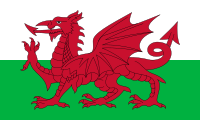
In church governance, a diocese or bishopric is the ecclesiastical district under the jurisdiction of a bishop.
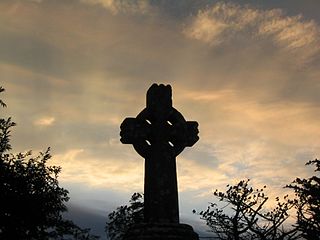
Celtic Christianity is a form of Christianity that was common, or held to be common, across the Celtic-speaking world during the Early Middle Ages. The term Celtic Church is deprecated by many historians as it implies a unified and identifiable entity entirely separate from that of mainstream Western Christendom. For this reason, many prefer the term Insular Christianity. As Patrick Wormald explained, "One of the common misconceptions is that there was a Roman Church to which the Celtic Church was nationally opposed."

William Williams, Pantycelyn, also known as William Williams, Williams Pantycelyn, and Pantycelyn, was generally seen as Wales's premier hymnist. He is also rated among the great literary figures of Wales, as a writer of poetry and prose. In religion he was among the leaders of the 18th-century Welsh Methodist revival, along with the evangelists Howell Harris and Daniel Rowland.

Mother church or matrice is a term depicting the Christian Church as a mother in her functions of nourishing and protecting the believer. It may also refer to the primary church of a Christian denomination or (arch)diocese, i.e. a cathedral church. For a particular individual, one's mother church is the church in which one received the sacrament of baptism. The term has specific meanings within different Christian traditions. Catholics refer to the Catholic Church as "Holy Mother Church".
The Presbyterian Church of Wales, also known as the Calvinistic Methodist Church, is a denomination of Protestant Christianity based in Wales.
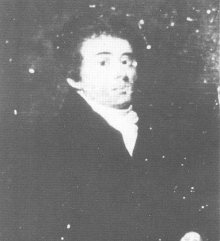
Griffith Jones was a Welsh minister of the Church of England and a promoter of Methodism. He is best known for spreading literacy in Wales with his circulating schools.
Religion in the United Kingdom is mainly expressed in Christianity, which dominated the land since the 7th century. Results of the 2021 Census for England and Wales showed that Christianity is the largest religion, followed by the non-religious, Islam, Hinduism, Sikhism, Judaism, Buddhism, and Taoism. Among Christians, Anglicanism is the most common denomination, followed by Catholicism, Presbyterianism, Methodism, Unitarianism, and Baptism. Results for the 2022 census in Scotland showed that 38.8% of the Scottish population identified as Christian, with 20.4% stating that the Church of Scotland is their main religion, whilst 13.3% stated their main religion was the Catholic church in Scotland.

Ann Griffiths was a Welsh poet and writer of Methodist Christian hymns in the Welsh language. Her poetry reflects her fervent Christian faith and thorough scriptural knowledge.

Literature in the Manx language, which shares common linguistic and cultural roots with the Gaelic literature and Pre-Christian Celtic mythology of Ireland and Scotland, is known from at least the early 16th century, when the majority of the population still belonged to the Catholic Church in the Isle of Man. Even so, Manx orthography departs so radically from Irish or Scottish Gaelic orthography that it is all but illegible to literate native speakers of both languages.

Despite its small size, the population of Jersey is made of people with a diverse range of religions and beliefs. Traditionally seen as a Christian island, Jersey's established church is the Church of England, and Anglicanism and Catholicism are practised on the island in roughly equal numbers. Together, these religions account for around half the population of Jersey. Other denominations of Christianity and other religions such as Islam, Judaism, Sikhism, and Buddhism account for handfuls of people on the island. In recent years, irreligion has been an increasing force in Jersey, with two fifths of the population identifying as having no religion. This number rises to 52% for Jersey people under 35.
Thomas Bowles was a Church of England priest. He is notable for a controversy in which he was appointed to two parishes in Wales where hardly any parishioners spoke English, despite the fact that Bowles spoke no Welsh.

Religion in England is characterised by a variety of beliefs and practices that has historically been dominated by Christianity. Christianity remains the largest religion, though it makes up less than half of the population. As of the 2021 census, there is an increasing variety of beliefs, with irreligious people outnumbering each of the other religions. The Church of England is the nation's established state church, whose supreme governor is the monarch. Other Christian traditions in England include Roman Catholicism, Methodism, Presbyterianism, Mormonism, and the Baptists. After Christianity, the religions with the most adherents are Islam, Hinduism, Sikhism, Judaism, Buddhism, modern paganism, and the Bahá'í Faith. There are also organisations promoting irreligion, including humanism and atheism. According to the 2021 census, Shamanism is the fastest growing religion in England.

Religion in Wales has become increasingly diverse over the years. Christianity was the religion of virtually all of the Welsh population until the late 20th century, but it rapidly declined throughout the early 21st century. Today, a plurality (46.5%) of people in Wales follow no religion at all.
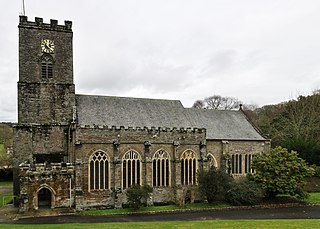
Christianity in Cornwall began in the 4th or 5th century AD when Western Christianity was introduced as in the rest of Roman Britain. Over time it became the official religion, superseding previous Celtic and Roman practices. Early Christianity in Cornwall was spread largely by the saints, including Saint Piran, the patron of the county. Cornwall, like other parts of Britain, is sometimes associated with the distinct collection of practices known as Celtic Christianity but was always in communion with the wider Catholic Church. The Cornish saints are commemorated in legends, churches and placenames.
Christian revivalism is increased spiritual interest or renewal in the life of a Christian church, congregation or society with a local, national or global effect. This should be distinguished from the use of the term "revival" to refer to an evangelistic meeting or series of meetings. Proponents view revivals as the restoration of the church to a vital and fervent relationship with God after a period of moral decline.
Nonconformity was a major religious movement in Wales from the 18th to the 20th centuries. The Welsh Methodist revival of the 18th century was one of the most significant religious and social movements in the modern history of Wales. The revival began within the Church of England in Wales, partly as a reaction to the neglect generally felt in Wales at the hands of absentee bishops and clergy. For two generations from the 1730s onwards the main Methodist leaders such as Howell Harris, Daniel Rowland and William Williams Pantycelyn remained within the Church of England, but the Welsh revival differed from the Methodist revival in England in that its theology was Calvinist rather than Arminian. Methodists in Wales gradually built up their own networks, structures, and meeting houses, which led, at the instigation of Thomas Charles, to the secession of 1811 and the formal establishment of the Calvinistic Methodist denomination in 1823.
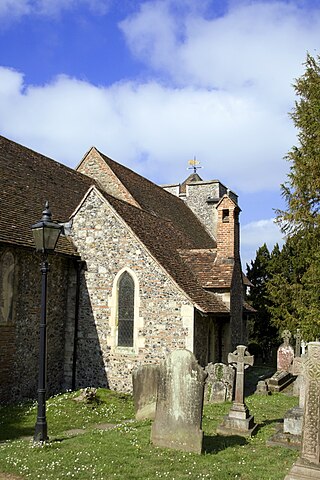
Christianity first appeared in Britain in antiquity, during the Roman period. The Roman Catholic Church was the dominant form of Christianity in Britain from the 6th century through to the Reformation period in the Middle Ages. The (Anglican) Church of England became the independent established church in England and Wales in 1534 as a result of the English Reformation. In Wales, disestablishment took place in 1920 when the Church in Wales became independent from the Church of England. In Scotland, the (Presbyterian) Church of Scotland, established in a separate Scottish Reformation in the 16th century, is recognised as the national church, but not established.

St Cwyfan's Church is a Grade II*-listed medieval church in Llangadwaladr, Anglesey, Wales. Located on the small tidal island of Cribinau, it is popularly known as the "Little Church in the Sea". The church dates from the 12th century, with some renovations made in the 19th century.

The early modern period in Wales is the period in the history of Wales from 1500 to 1800.
